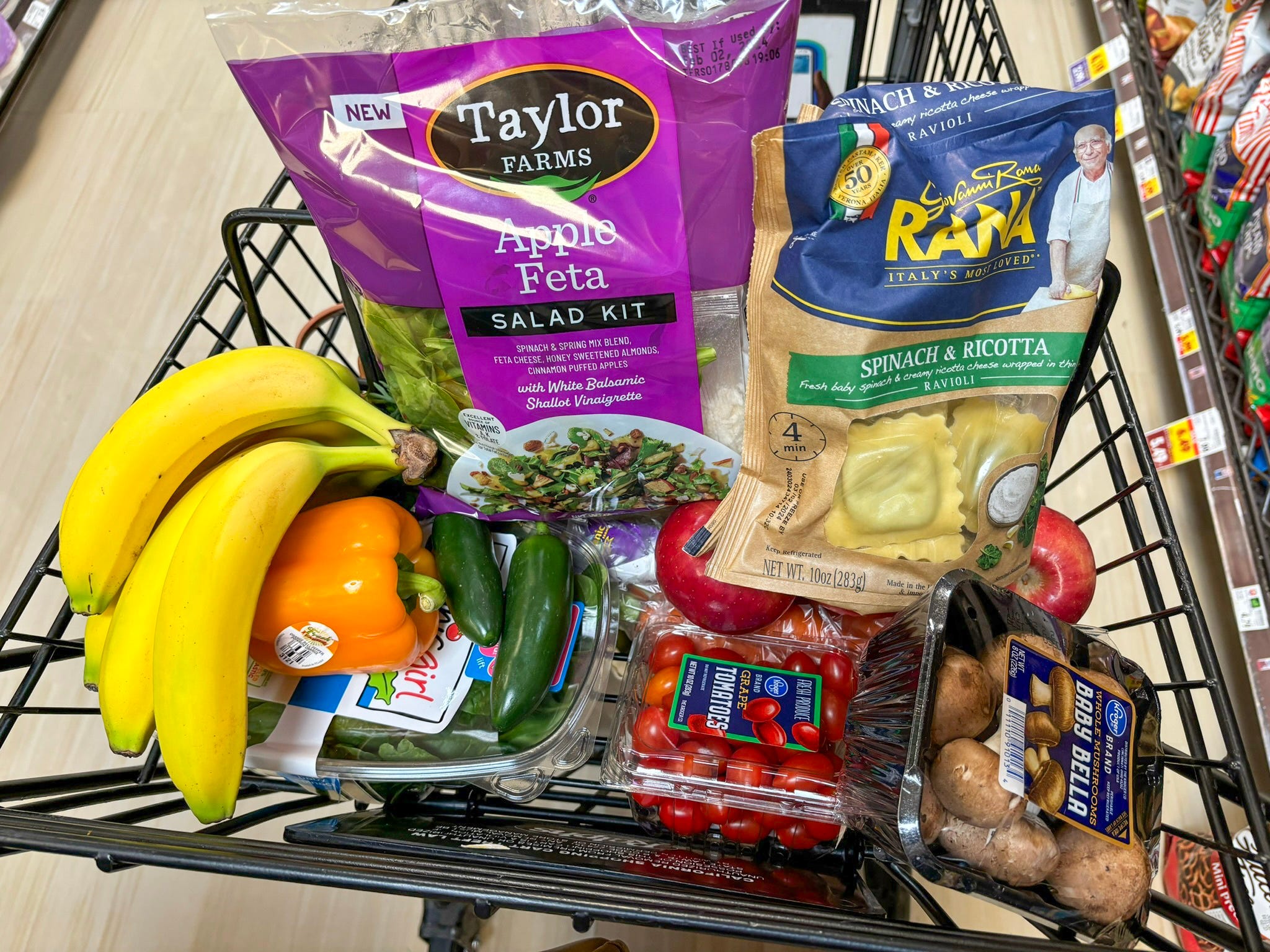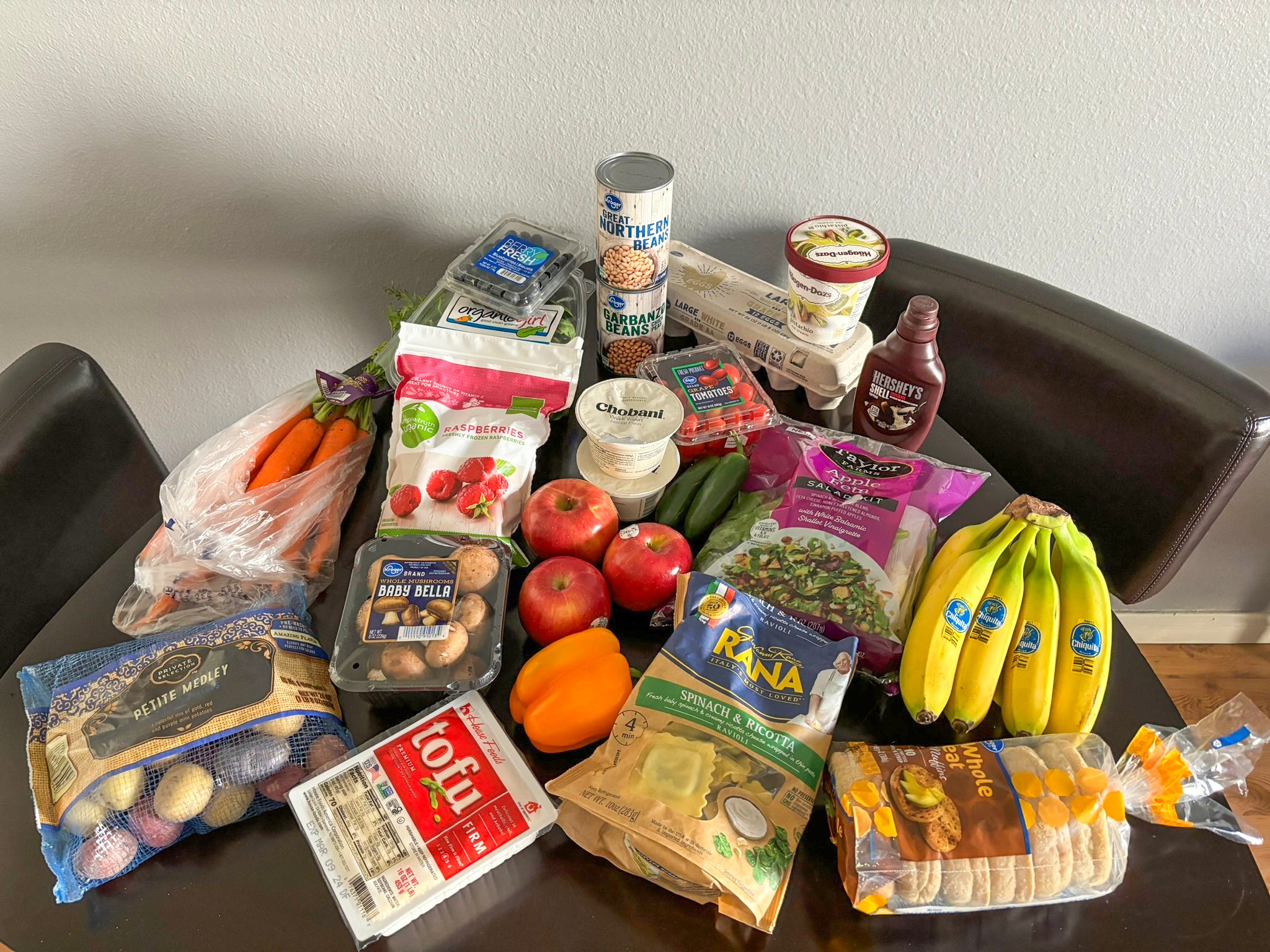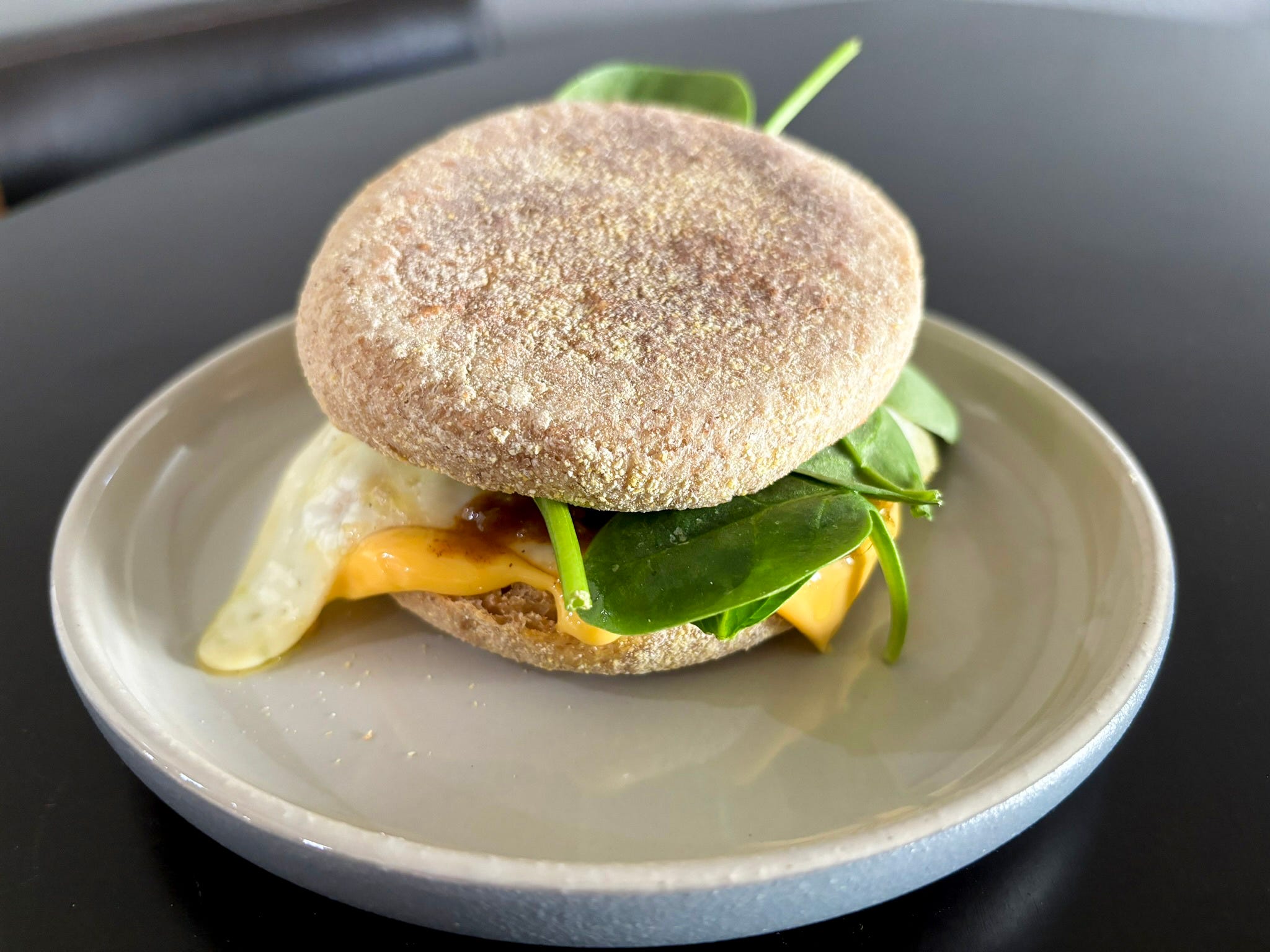
Paige Bennett
Grocery shopping can feel expensive and tiring, but some people have developed methods they believe can make it easier and better.
For people like chef Will Coleman, the “6-to-1” shopping method is a helpful way to meal plan and reduce food waste.
In a TikTok video, the chef said this method involves buying six vegetables, five fruits, four protein sources, three starches, two sauces or spreads, and one “fun” item.
According to Coleman, focusing on simple ingredients and sticking to a short list can help shoppers save money.
As someone who shops for myself and my partner, I was curious if this could cut down our grocery spending and maybe even simplify our meal-planning process.
Here’s how the 6-to-1 method worked for me.
It took a minute to get the hang of grocery shopping using this method, but I was pleased with my haul

Paige Bennett
My usual shopping process involves planning my meals, checking my kitchen for what I already have, collecting coupons, and making my grocery list.
Coleman’s method seemed adaptable, as a shopper could go into the store, buy the items they like in each category, and then meal plan based on what they purchased.
At first, seeing six veggies and five fruits on my grocery list intimidated me. I followed a vegetarian diet when I tried this, but it still sounded like a lot of produce to stock up on.
However, I quickly maxed out in these categories.
Throughout my shopping trip, I struggled to decide on three starches and got creative with the categories. For example, I bought Greek yogurt, which could be a protein, to fit into my sauces category.
I left with the following groceries:
- Vegetables: carrots, spinach, salad mix, bell peppers, jalapeño, and mushrooms
- Fruits: apples, cherry tomatoes, bananas, blueberries, and frozen raspberries
- Proteins: great northern beans, chickpeas, eggs, and tofu
- Starches: spinach-and-ricotta ravioli, petite potatoes, and whole-wheat English muffins
- Spreads or sauces: plain Greek yogurt and Hershey’s chocolate-shell topping
- “Fun” item: pistachio ice cream
Only focusing on what I needed to build meals and skipping random items or add-ons that didn’t fit into my plan helped me save money.
I spent about $60 on all of my items this trip. Normally, I spend between $70 and $85 on groceries each week.
I repeated my breakfast and lunch meals throughout the week to save time

Paige Bennett
I usually switch between one savory and one sweet breakfast throughout the week. My lunches typically involve a salad or leftovers, and I usually just switch between two meals.
So, I did the same when I tried the 6-to-1 method.
For the first breakfast, I chose to eat whole-wheat English muffins with nut butter, honey, and bananas or blueberries. The second meal consisted of English muffins, egg, cheese, spinach, and hot sauce.
For lunch, I mixed chickpeas and fresh apple slices into spinach and a pre-bagged salad mix. These meals were simple but utilized a lot of produce and saved time on meal planning.
My meals were more creative on evenings and weekends

Paige Bennett
I have more time to cook during evenings and weekends, so I tried to add variety to these meals.
One night, I made a spicy bean-and-tofu burrito with a Greek-yogurt dip.
I also made spinach-and-ricotta ravioli with pesto that I had in the freezer, and added mushrooms and cherry tomatoes I’d purchased to it.
Another pasta dish I made included bucatini and Parmesan I already had, as well as spinach and tomatoes. On the weekends, I roasted, quartered, and shredded potatoes for hash browns and made veggie and fried-egg dishes.
It was nice not having to think too hard about which ingredients I had to use up since I’d only purchased a few items in each category.
During the week, I ate more fruit with the desserts I made

Paige Bennett
As a fun treat for my partner, I made our favorite chocolate-chip cookies with pantry staples and the frozen raspberries, which turned out delicious.
I also enjoyed my “fun” grocery pick, pistachio ice cream, with fruit and Hershey’s chocolate-shell topping when I craved something sweet.
Overall, the 6-to-1 method was handy, and I’d use it again
Although I did use a few staples I already had on hand to make this method work, I’d say my week was pretty successful.
I used almost all the groceries I purchased for this experiment and spent less than I normally would on food this week. A few items that weren’t eaten after seven days, like the ravioli and carrots, were easy to save for later.
This 6-to-1 method seems especially helpful for people who struggle with making and sticking to lists, avoiding impulse buys at the grocery store, or using up food before it goes bad.
Although I won’t use this every week, I’d use it again on grocery trips when I need to simplify meal planning or tighten my budget.
The plan also seems flexible, so I may swap out sauces and spreads for dairy or dairy alternatives next time. I think those would’ve been helpful to have on hand.
This story was originally published on February 23, 2024, and most recently updated on April 28, 2025.
The post I use the ‘6-to-1’ method for buying groceries to save money and time appeared first on Business Insider.




